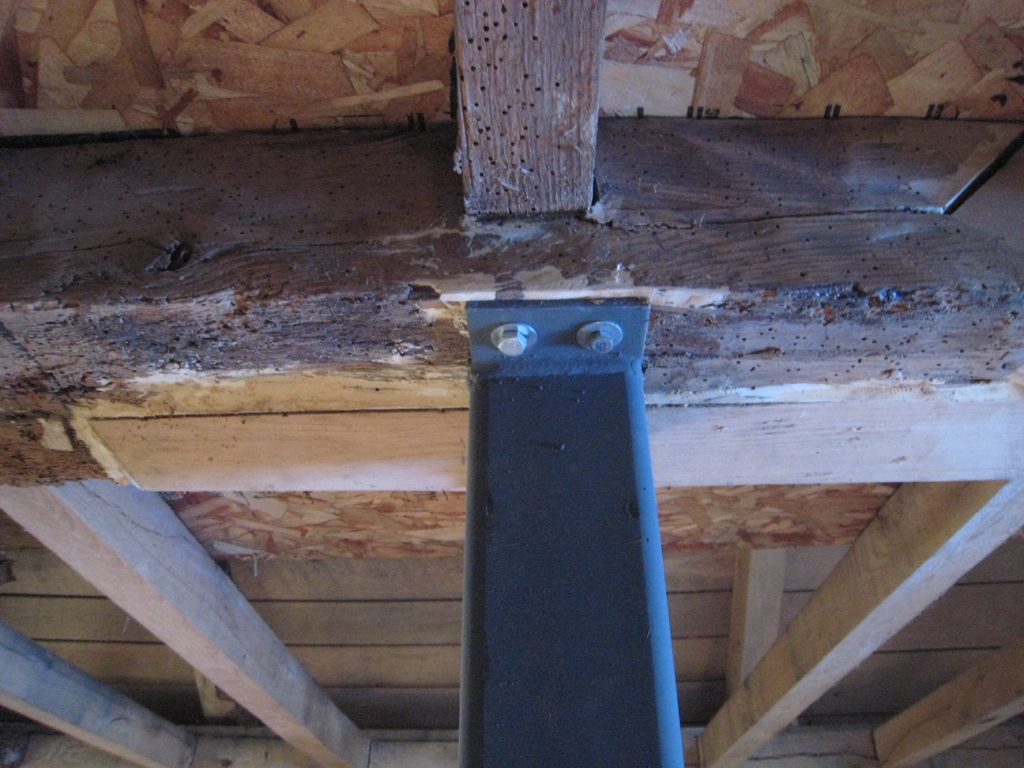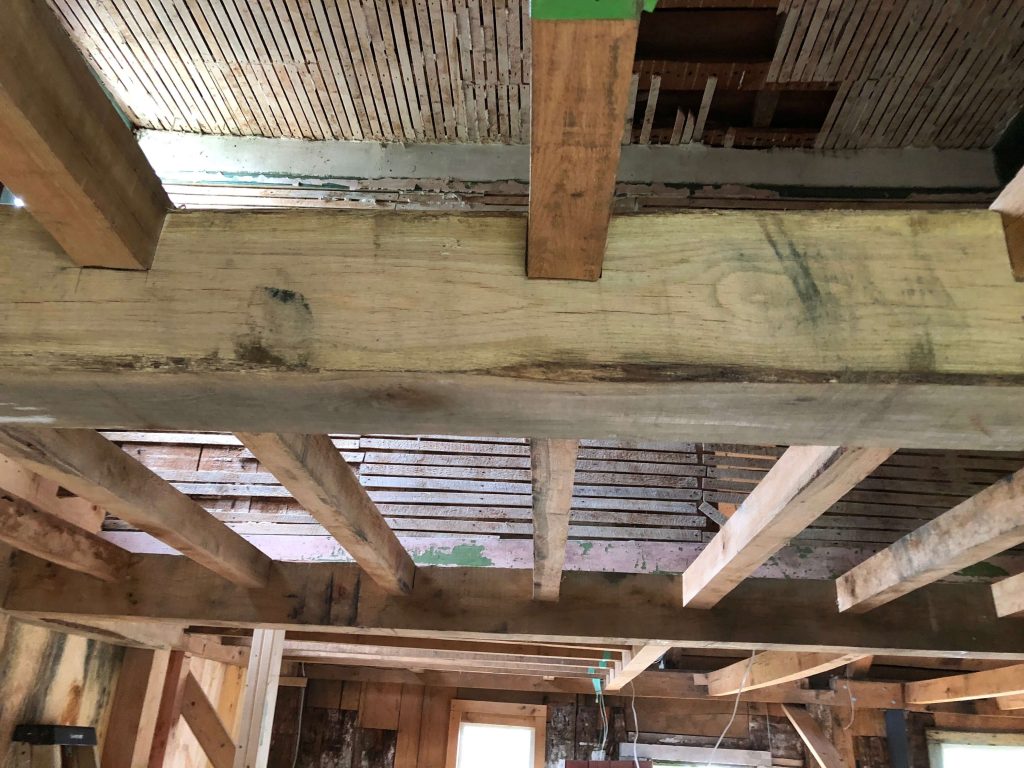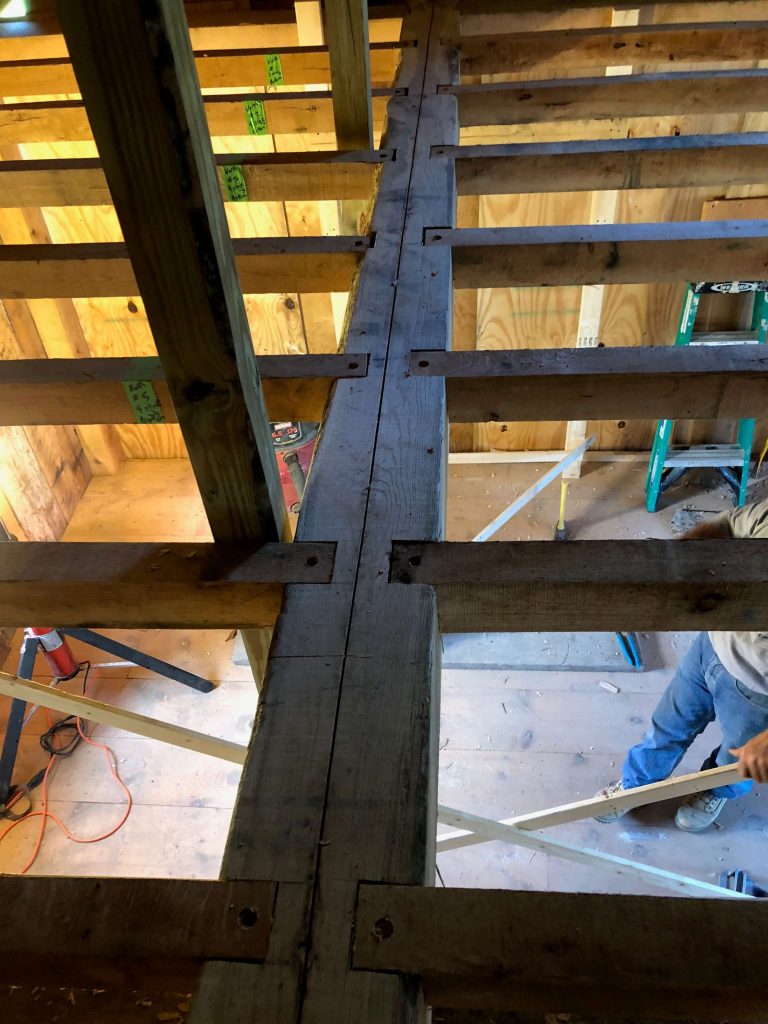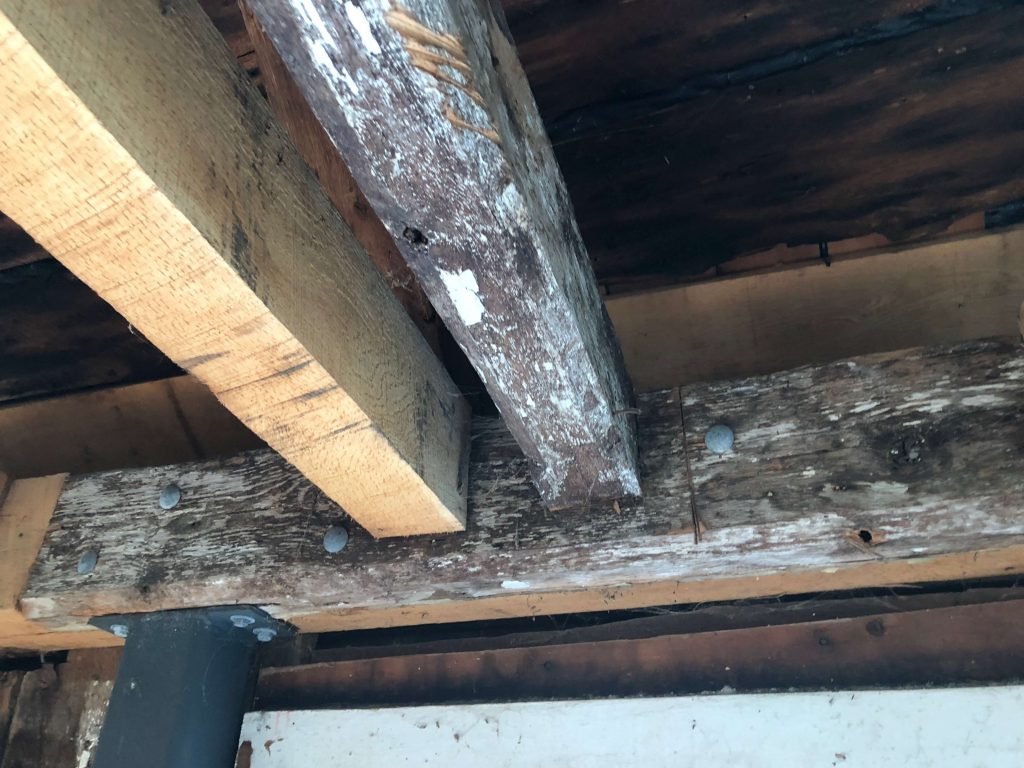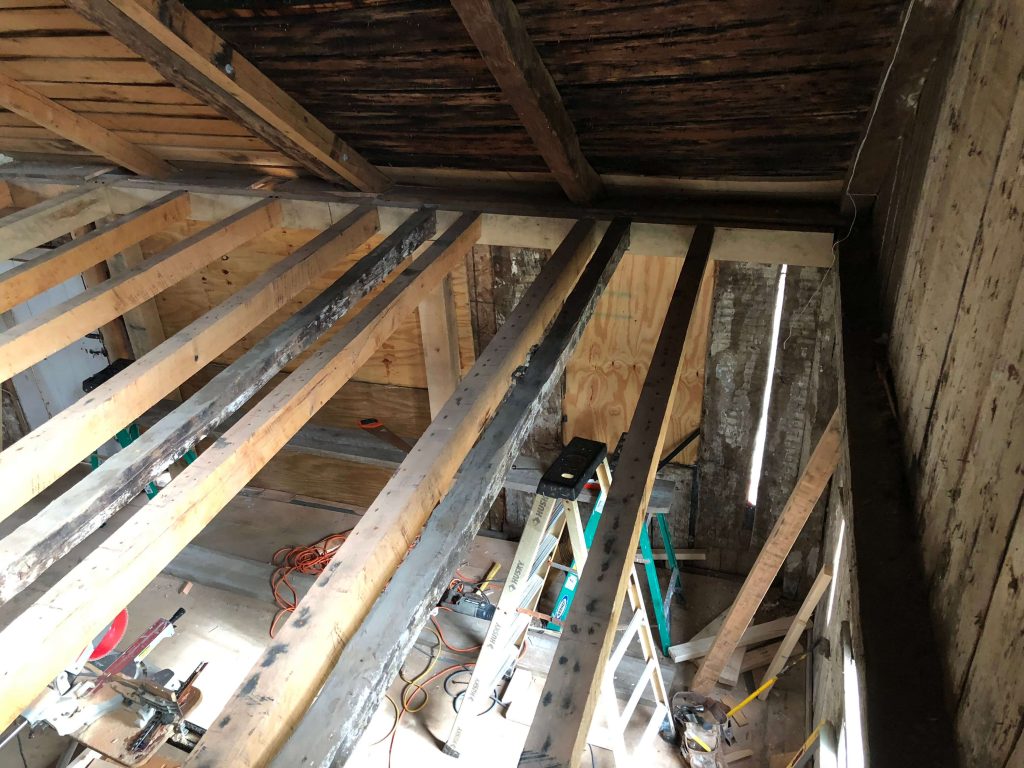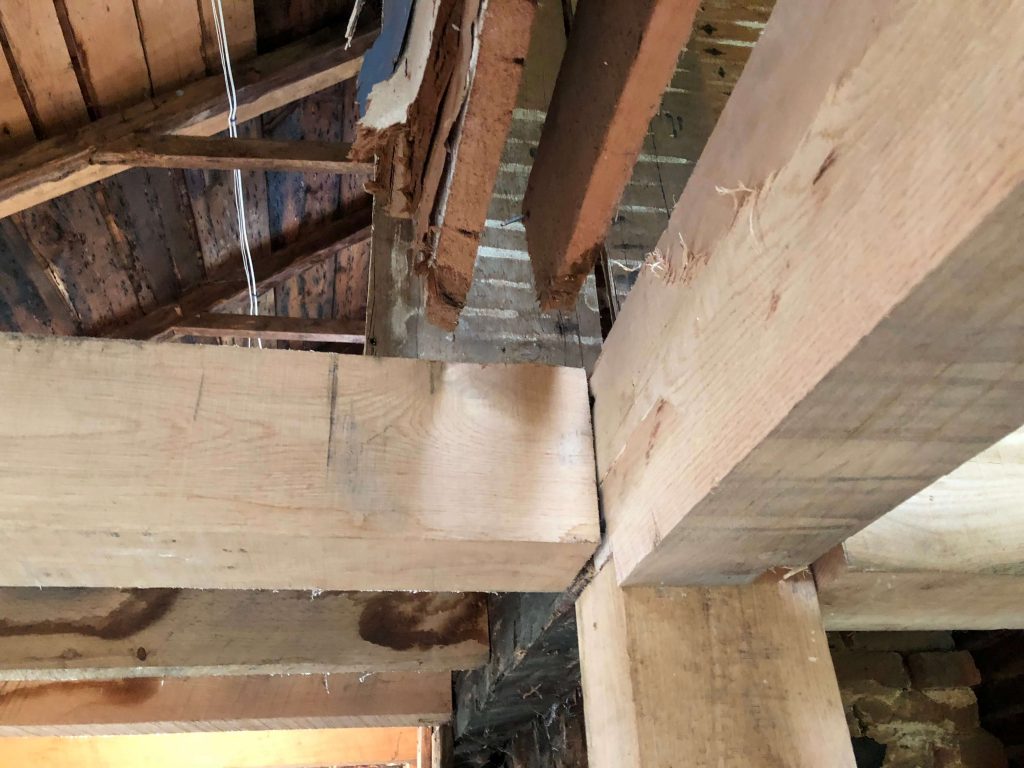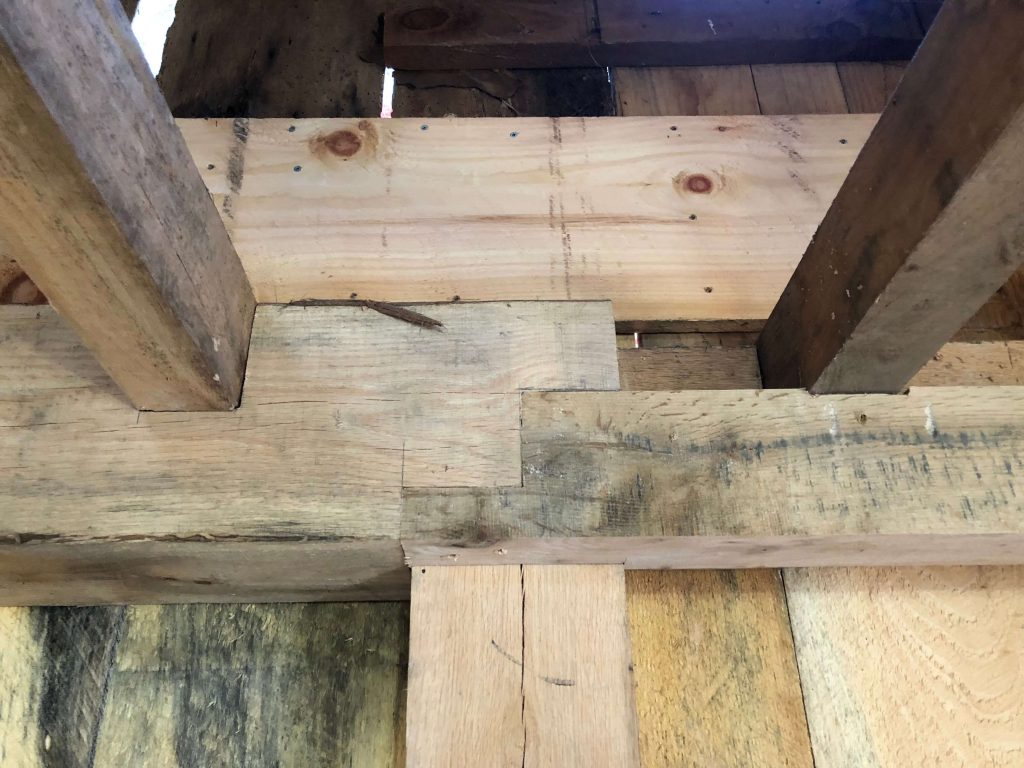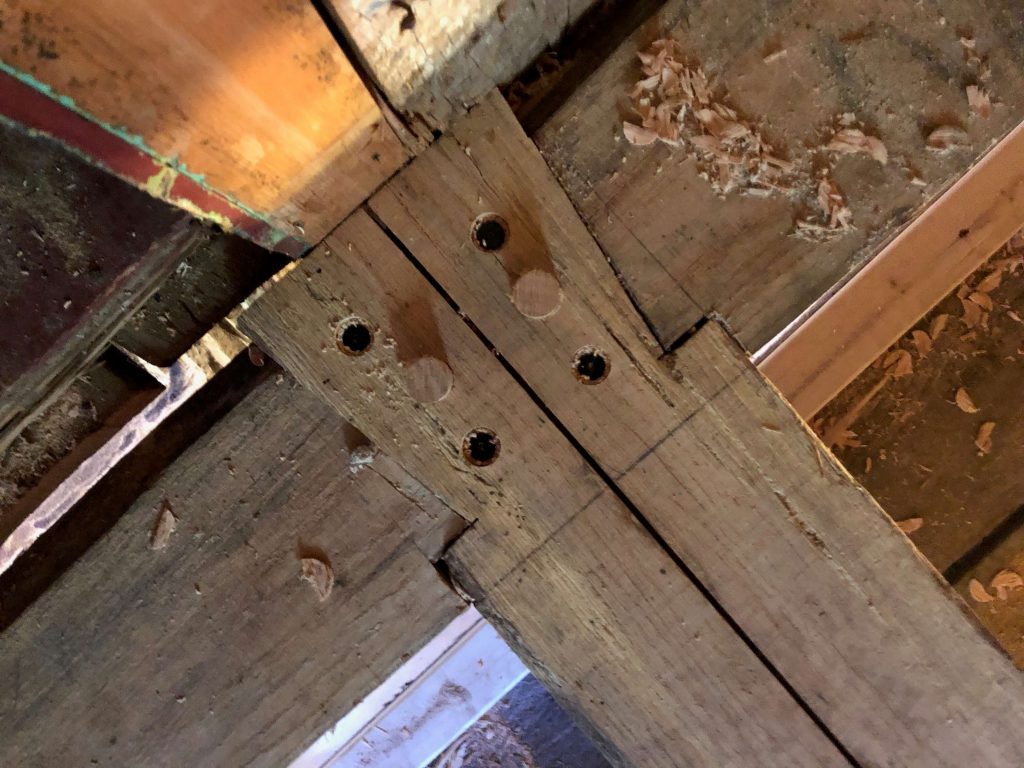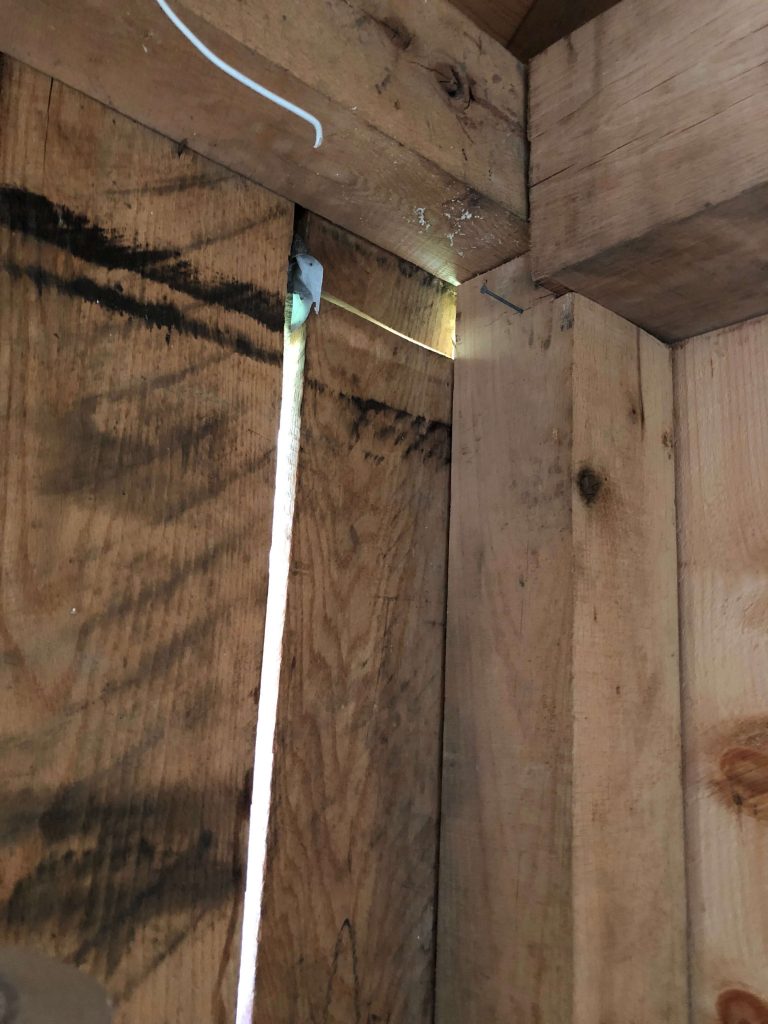February 19, 2018
The Eighteenth Century Cape Cod Post and Beam––Merging the Old with the New: Part 2.

Let’s get to the heavy lifting.
Structural Systems
Guided by the Department of Interior’s Standards for the Treatment of Historic Properties, we identified and tried to retain and preserve “structural systems and visible features of systems that are important in defining the overall character of the building.”
Sound structural systems are essential to an old house to ensure its longevity and viability going forward. Due to considerable structural deficiencies such as failing beams and posts, affected by age and insect/rodent infestation, hidden behind walls and other coverings until now, the requirements for future structural integrity to prolong the life of this house for another 250 years took priority. Time also took its toll on other repairs (visible and hidden) from the restoration phases during 2005 and 2009. Temporary fixes such as steel posts to support the building in compromised weight-bearing areas were removed and replaced with traditional post and beam construction.
Employing a Careful, Surgical Removal
The entire house was stripped of its 20th century additions and repairs. Damaged plaster walls and laths were removed from the first floor. Plaster samples saved. Plaster removed with laths remaining on the second floor for the time being. Homasote-type highly flammable cellulose based fiber wallboards originating in the early 20th century also removed and discarded.
Fragments of wallpaper and other artifacts were carefully removed and saved for future display. The best examples of white washed wallboards will remain.
[A record of wallpaper fragments can be found in Blog entries in August and September 2017.]
Newly Installed White Oak Posts, Beams, and Joists
White oak joists had been added during 2005 with a steel column installed in 2009 to keep the house stable and secure, an ongoing challenge, until a permanent solution was implemented in 2017. New white oak posts and beams were installed in October.
- Before: Steel post in center of the formal parlor supporting a failing Summer Beam; temporary repair from 2009. Gone.
- After: Joists connecting to newly installed Summer Beam in formal parlor. At this stage, plaster & lath ceilings not yet removed. Fall 2017.
- Knee wall installed for roof/rafter structural stability. Note: Summer Beam detail from second story above.
- Formal parlor below with detailed view of Summer Beam from second story. Tom Figueiredo assessing the work.
- Merging the old with the new. The plate has been replaced with a new beam and the steel post removed.
- Second story view of great room/kitchen. Plate replaced and steel posts removed.
- Post and beam construction close-up.
- Detail showing a scarfed joint connecting the new plate with a beam installed in 2005. Small Bedroom/Keeping Room.
- Detailed view from second story showing the Summer Beam affixed to a cross-beam with screws and pegs.
- Formal Parlor: Covered corner post, circa Greek Revival. Popular wood paneling of the 1960s-1970s. Gone!
- Formal Parlor: Original corner post with beaded trim removed. It will remain.
- Formal Parlor: Newly installed corner post to replace a non-viable post with inadequate repairs from 2005. See image below.
- Formal Parlor: The Corner Post replaced by new one. Retained as an artifact for education purposes.
As shown through above images, any architectural features original (or close to original) to the house have been retained when not damaged to the point of non-viability, i.e., sponginess to the touch or with a knife poke, or worse, deteriorating close to a dust-like consistency. A few original corner posts deemed strong and viable have remained. Some of the original joists were kept in place. While no longer serving any stabilizing function, these artifacts speak to the house’s original building characteristics.
Restoration work performed by Thomas J. Figueiredo Carpentry & Builders, assisted by John Taber.
Please check future blogs for more on this series.

